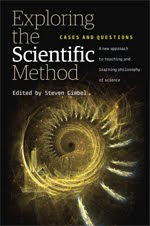Authenticity
My dear friend Andy over at Culturebot had some questions the other day that I've been mulling (who can resist a post entitled " a few random, possibly offensive, thoughts and observations"?) I'll want to play with a couple of them, but today I'm focusing on his consideration of authenticity.
My other possibly offensive thought is about culture and authenticity. I was thinking a lot about Hasidism, as I have family members who are pretty much a part of that whole scene. For those of you who don’t know, Hasidism is a version of Judaism espoused by a mystic and scholar known as the Ba’al Shem Tov, beginning around 1734. If you hang in Williamsburg and other parts of the Five Boroughs you’ll see them walking around with the black hats and payot, long coats, etc. The reason they dress that way is that they are dressing, as much as possible, as did the Jews of Eastern Europe during the time of the Ba’al Shem Tov. At least that’s what I’m told. And they basically assert that their form of Judaism is the only authentic form. Which is their right. BUT I was thinking - what if there was some radical sect of African-Americans who dressed in ragged clothes and chains, as did their ancestors in the 18th and 19th centuries, and insisted that they were the only authentic expression of Af-Am identity? You’d think they were friggin’ nuts, right?Sociologists, of course, will say that authenticity as a category is always constructed. This is what cultures do, decide what is genuine and acceptable and what is not. But the question is more interesting than that.
So what’s up with that? Does doing things the way they’ve always been done necessarily confer authenticity? How and when did the notion of cultural authenticity even come into existence? I would really, really appreciate it if someone smarter and more knowledgeable than me could explain when culture became so inauthentic and manufactured that we had to draw a distinction?
We have senior theses written often asking this exact question and it often comes from students who are deeply enmeshed in popular music and coming out of a suburban middle class background. Are those coming late to the party, only once it has become fashionable, less authentic than those of us who have been involved in the trend before it became well-known and respectable, back when we were marginalized for it? Can I be authentic in producing music that I love, but which began with a marginalized group I do not belong to? Is culture owned?
The entire question of authenticity seems to rely on a touchstone, what philosophers call an ostensive definition, that is when you define a concept by pointing at something and saying what I mean by X is that thing right there and all others appropriately like it. Yes, what counts as appropriate for the similarity relation is a problem, but the part that strikes me interesting in this case is the thing pointed to.
Often, it is not a real thing, but an idealization. We select an artificial construction, often a romanticized image and freeze it, making it into an icon. That icon that never actually existed then becomes the touchstone for genuineness. For Hasidim it is an icon of an 18th century Eastern European Jew. For the Amish, a Christian of roughly the same period. For blues aficionados, it is an African-American musician of the Mississippi Delta from the Depression.
This is not always problematic. Often times, cultural movements do come out of particular places at particular times. Reggae did come out of Jamaica in the 60s from a community of artists intentionally bringing it out of the artistic, religious, and political context. It was designed as an outlet to express the anger, joy, and aspirations of those experiencing that sort of life. There does seem to be some sense in which we can look at the work of the Perry, Marley, and Cliff and say that it is authentic as a touchstone. One could say of those who mimicked the style without the cultural context, that there is something inauthentic, that it is missing a piece. An upper class white kid could love the music, but could never come from the experiences that produced it, no matter how skilled he was at reproducing the sound.
Yet, this denies that every human endeavor, even authentic ones, evolve. Our notion of authenticity is such that it is so deeply committed to its ostensively defined model that it disallows growth, change, and improvement. The model is held up as an archetype, a perfect unalterable Platonic Form, and so authenticity forces us to be stuck in time, a time other than our own, making true authenticity impossible to achieve. Our attempts to be authentic are self-refuting, doomed to fail.
Authentic forms can become influences on others in different contexts and rightfully create new experiences that are themselves authentic. The rich white kid who loves reggae can use that love and the insight in the original to create his own authentic expression of alienation, of being trapped in his own quite different social hierarchy. Non-Hasidim can take from the preserved vision of the Shtetle occupant something that can by contrast or similarity speak truth about life now and about the potential we have to live in a way that better engenders our care for the other.
By binding authenticity to a dead image, often one that never existed, we seem to disallow for authenticity which is the genuine consideration of the actual context of our lived lives. Anyone who has ever kept a journal knows how much of our own lives we forget, how much wealth of experience is lost in day to day living. It is exponentially so with the cultural wisdom we lose when we lose generations. The Hasidic and Amish approaches do remind us that there are questions to be asked about whether this change is a good one, not all change is progress. But, at the same time, some change is good.
In this way, perhaps the notion of authenticity should be replaced with Aristotle's notion of virtue, that which helps us as individuals and as a group make real our potential. We forget some of the ways of those who came before, ways that are helpful in a deeper sense. We too often and wrongly jettison them for something novel. But, of course, those ways can be improved upon and we need the freedom to experiment with the new, knowing that experiments often fail, but not living in such fear of the failures that we fail to try.






|